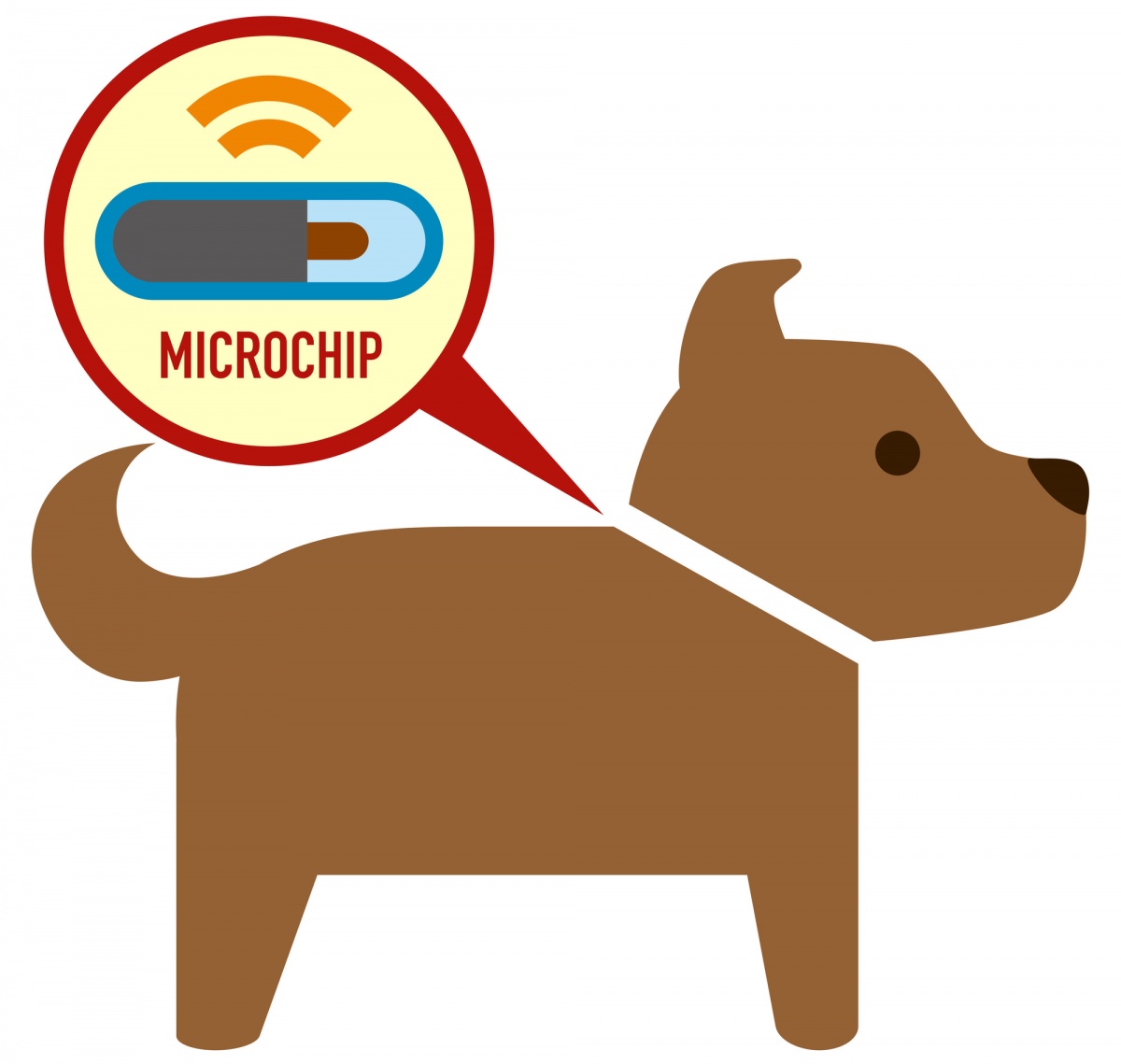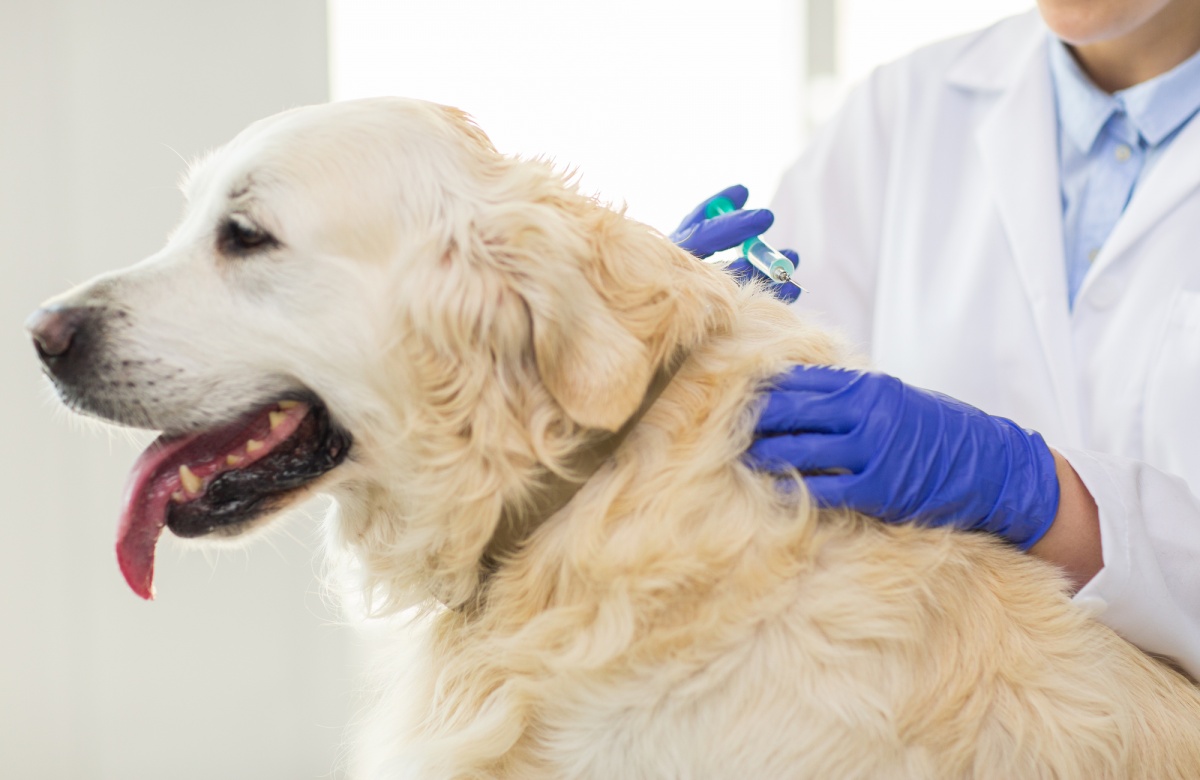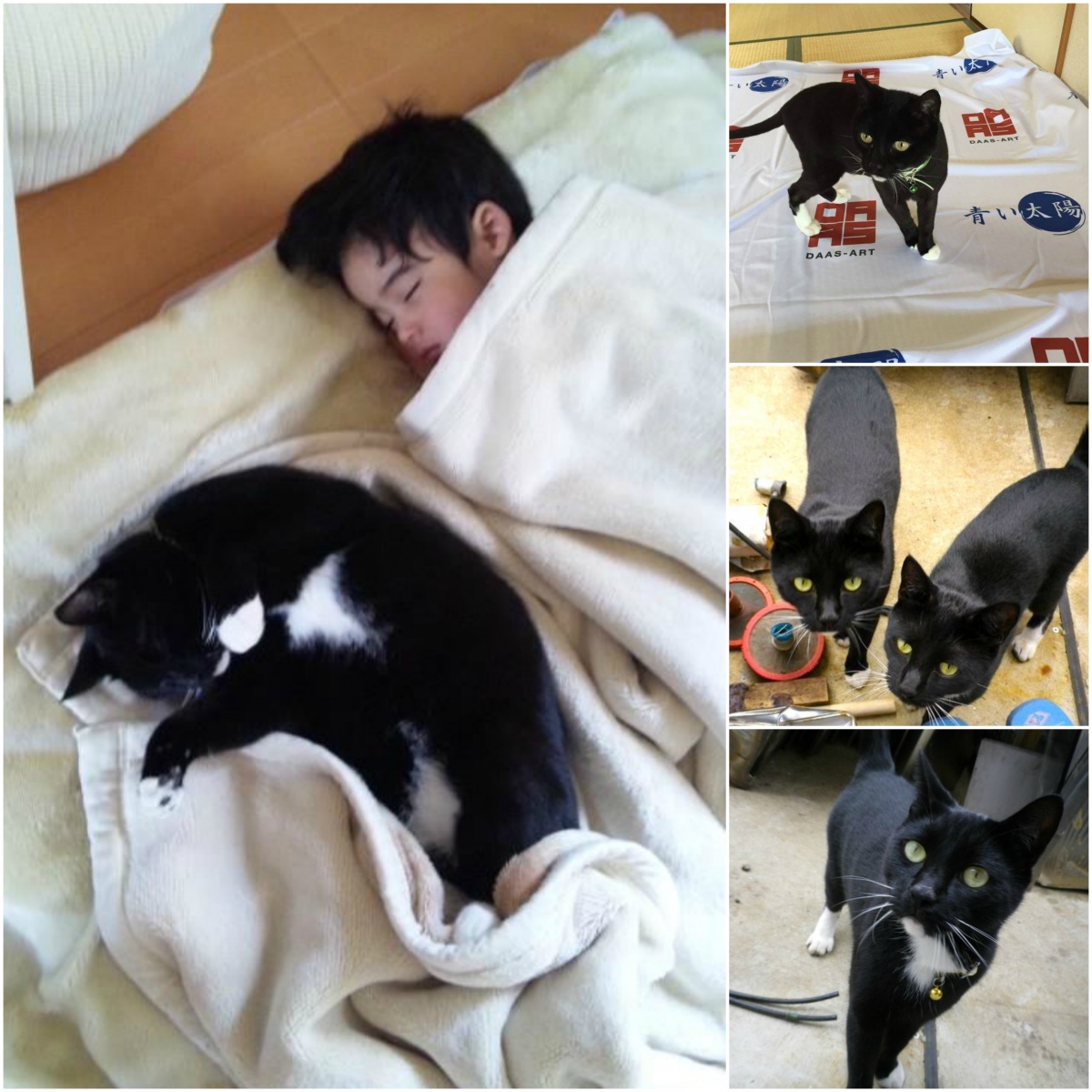7 Steps to Bringing Your Pets to Japan

It had always been my ultimate plan to move to Japan, and there was nothing standing in my way except for one not-so-small detail—taking my two cats with me! It turned out to be a long, grueling and expensive process. I learned the hard way, but your experience can go more smoothly with these essential tips!
By O.M. Miki1. Microchips
Futuristic and scary? Not at all! Microchipping animals is actually quite beneficial even if you're not traveling out of the country. These microchip implants, also known as PIT (Passive Integrated Transponder) tags, are placed under the skin of your animal, and use passive RFID (Radio Frequency Identification) technology that allows them to be scanned and identified.
You can go to almost any veterinarian to have your animal chipped, and once you've done it, you'll receive a registration certificate with the chip ID and recovery service contact information. You can affix this ID to your pet's collar tag as well.
The Japanese Animal Quarantine Service (AQS) will require copies of this certificate to prove you have ownership of your pet, and that the animal is not being imported illegally. You can see a general flowchart for the import process at the AQS below.
2. Import Permits

At least 40 days prior to importing your animal, you must file an Advance Notification form with the AQS (available at the link above). While the forms are annotated in English, this process may take more time if you're sending documents in a language other than Japanese. I was lucky that my husband was Japanese, which made communication easier, as he was able to fill in the forms quickly. It also helps to have a Japanese speaker to respond to follow-up information requests that may come in from the AQS. It's certainly possible in English, but Japanese can be a big help (though, as you'll see, it doesn't automatically clear every hurdle!).
If you have multiple pets, as I did, you'll have to fill out separate forms. If they're not submitted together, or if one animal is approved and the other isn't, the importation dates will also be different. In my case, I had to leave one of my cats behind with a close friend until he received a missing vaccination shot. This resulted in one cat flying with me to Japan and the other flying alone one month later.
Please note that your Advance Notification form must not only be submitted but approved at least 40 days before your pet can arrive, so plan ahead accordingly in case of any errors in your initial submission. Also, be aware that quarantine facilities at AQS offices must be available on your pet's arrival date before they can approve your form. In some cases, they may ask that you change the date or location of import (possibly to another office in a whole other prefecture) if nothing is available at the time you've requested.
3. Vaccinations
Depending on the country you live in, you'll need to check if Japan has certified your region as rabies-free. At present, the very short list of rabies-free countries and regions recognized in Japan only includes Iceland, Australia, New Zealand, Fiji, Hawaii and Guam. If your country or region isn't on the list, as in my case, you'll need to do the following:
● Your pet must be vaccinated against rabies twice with an inactivated or recombinant vaccine, both times during the 12-month period prior to entry. If you have puppies, kittens or any other animal younger than 91 days, you will not be allowed to proceed with the first vaccination.
● The second vaccination can be given no later than 30 days after the first vaccination due to its expiration date. Be sure not to get these vaccinations more than a year in advance, because both vaccinations must not expire before you arrive to Japan.
● Also make sure that the rabies vaccinations are given after microchipping, not before, as vaccinations before microchipping are held as invalid.
Check the FAQ below for details.
4. Blood Titer Test
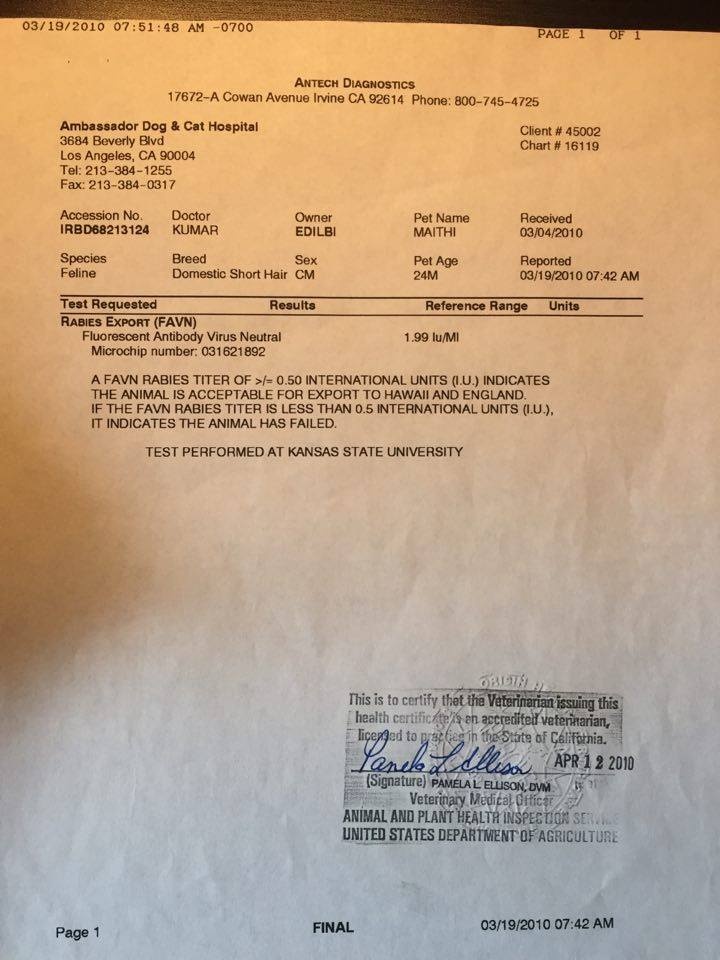
Once you've completed the vaccinations, your dog or cat must have a blood titer test (antibody titer test) processed by an approved laboratory. The date when the blood was drawn for the titer test must be more than 180 days and less than two years prior to the arrival date in Japan. Remember that window—as you'll see, it's very important!
5. Health Certificate
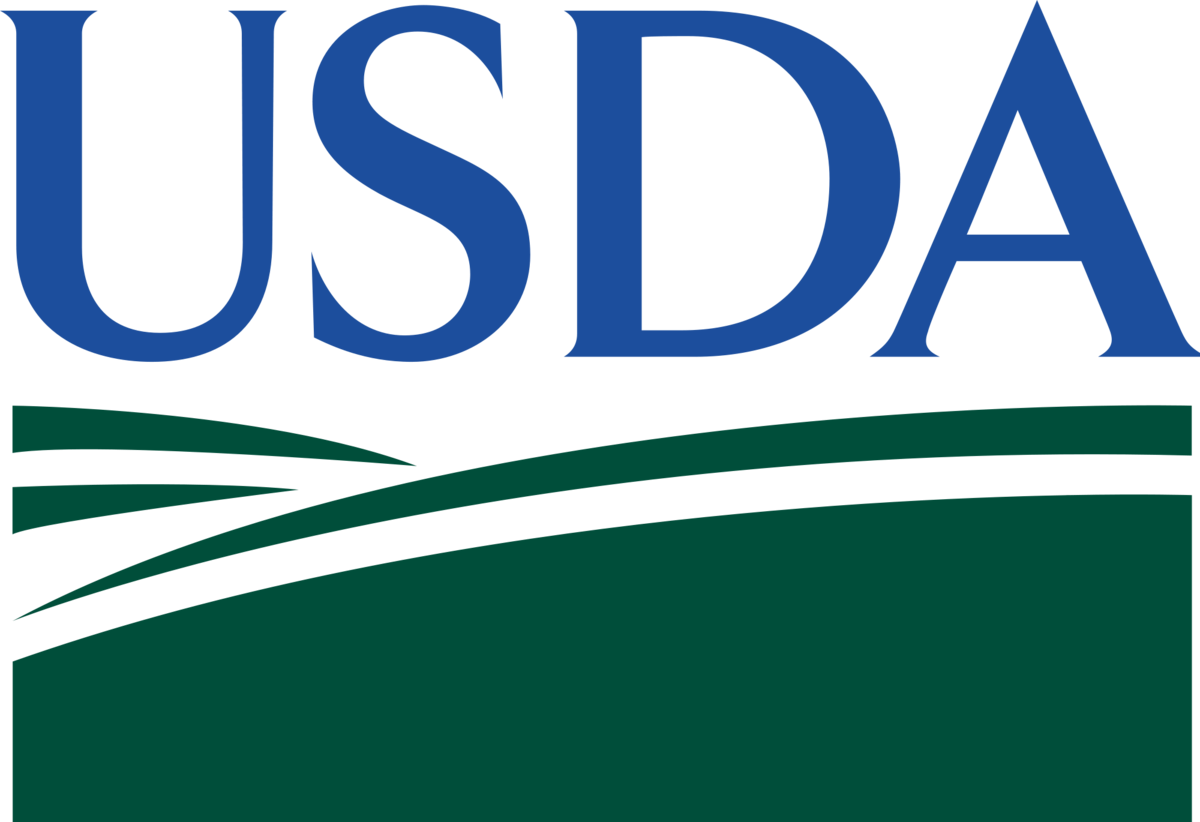
https://commons.wikimedia.org/wiki/File:USDA_logo.png
You also need a health certificate for your pet. While this seems simple enough, the challenge is the small time frame in which you have to get it. An accredited veterinarian must complete Japan's Veterinary Certificate in the two days prior to your departure—and no, you can't get it early. That means you have to add going to the veterinarian's office as part of your final two-day plan in your home country.
So now you're in the clear, right?
Well, if you happen to be traveling out of the U.S., you must also have your forms endorsed by the USDA State Veterinarian's office. Keep in mind you now only have about a day and a half to do this, depending on how far away the location is. Remember, this isn't the same office as your pet's veterinarian, but a state government office responsible for the import and export of animals. If you're planing to import a pet into Japan from another country, be sure to locate the proper governing authority.
Most of these forms and stamps of approval cost money, and when you factor in the vaccinations, tests, microchipping and all that running around, you've spent quite a bit already. But this is chump change compared to what can come if you don't do things right.
6. Choosing Your Pet's Method of Travel

Before you travel, you should consider buying a suitable pet carrier. Some airlines have specific pet carrier requirements. If your pet carrier is small enough, some airlines allow you to travel with your pet on the plane. However, most pet carriers are too big, so most likely your animal will be placed in cargo. Having a large carrier may sound like a hassle, but you should think of your pet too! For long flights they'll need a bit of wiggle room to lay and sit comfortably.
Be sure to read the guidelines for bringing your pets on airplanes at your airline website. That being said, it's also important to choose your airline wisely when flying with pets. Some airlines warn of the possibility that your animal could die due to all sorts of conditions during flight—and that's not something you want to go through, especially considering all the hoops you've jumped through just to make it to this point. I flew Korean Air, which is one of my favorite airlines to fly, and I knew my pets would have a safe and smooth travel experience.
7. Quarantine
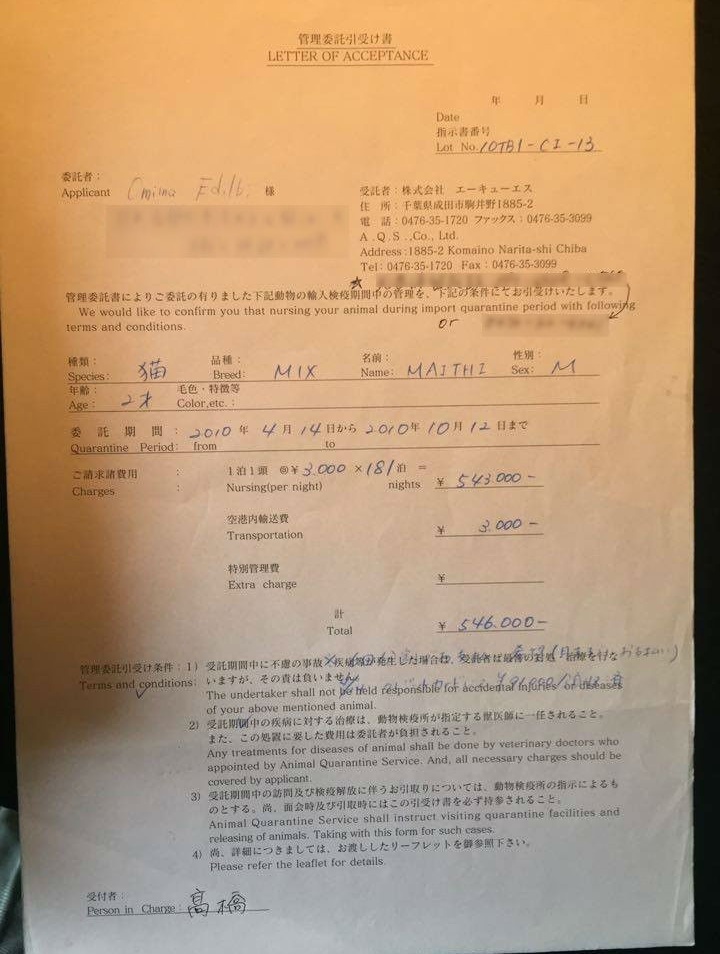
Once you arrive in Japan, you'll have to—you guessed it—fill out more paperwork. In this case, it will be the import inspection forms from the AQS. This is also when the paperwork you sent ahead is checked against the originals you've brought with you—and that's right, you have to make sure you brought original copies of everything!
If your paperwork is all good to go, then your animal will only have to stay quarantined for a short period of time, which is usually less than 12 hours. But do you remember all the different windows of validity I mentioned earlier? And do you remember the validity window for the blood titer test? Though my cats both passed the test, the elapsed time since the test date was too short. So the paperwork still checked out, but my cats had to stay quarantined for 180 days (6 months)!
The worst part is, quarantine is not free. You have to pay ¥100,000 (about US$923) per month, per animal. In the end, I paid a grand total of ¥1,200,000 (US$11,081) to quarantine my two cats.
The good news is they stayed at something similar to a cat hotel. Accommodations were actually really nice, and the caregivers stuck to the diet we asked them to follow. They also scheduled daily morning and night play times so the cats did't feel lonely or bored. If you live too far away to visit, they'll even mail you monthly reports similar to journal entries that let you know how your animal is feeling physically and emotionally.
And Finally...
Despite all the running around, piles of paperwork and money spent, the entire process is definitely well worth it! The minute your pets are free to run around your home, you're reminded that it wasn't just an animal you brought with you, but a member of your family. So the only thing left to remember is to continue to love them as you did at home.
Even though your pets can't say thank you, you know deep down they appreciate your love. The cats in the photo above are Itchi and Maithai, both of whom I brought with me from California.
You can find more info on traveling with pets below!


